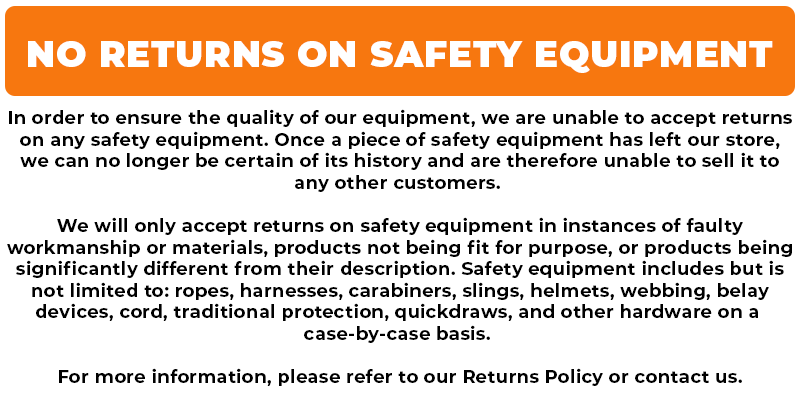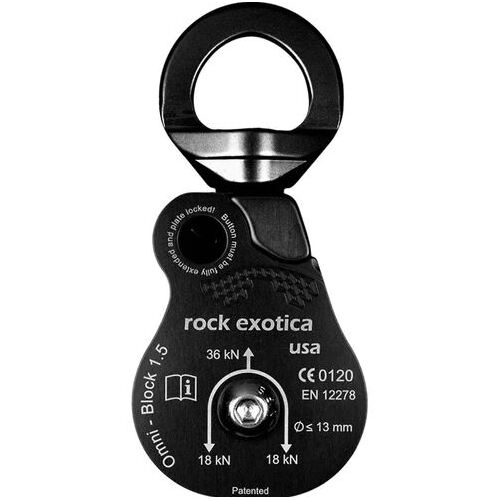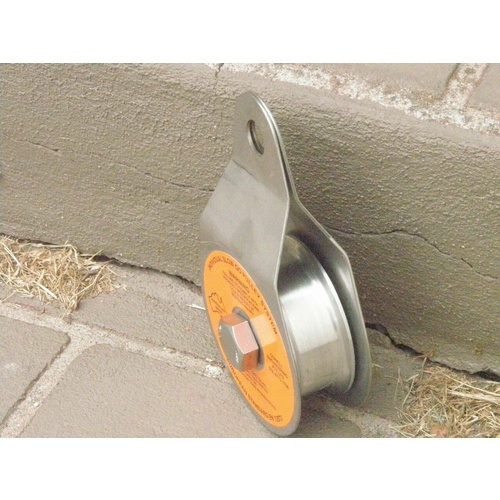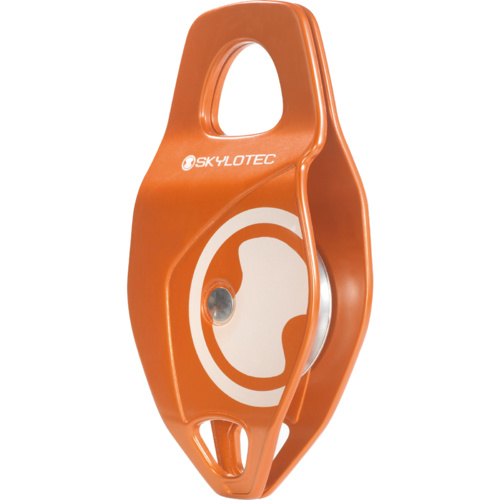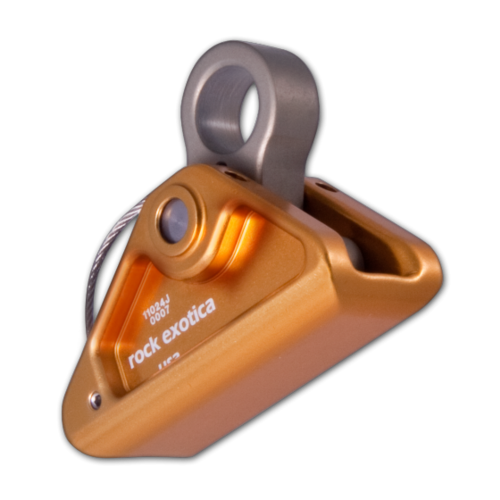Top anchor point on belayed activities. Provides extra friction to assist with slowing the decent for safer lowering of participants.
- Dramatically reduces rope shear (wear) to help extend rope life.
- Solid Stainless Steel centre disperses heat quickly and dramitically reduces rope deposits.
- Made entirely from quality stainless steel materials for maximum life.
- Will accommodate rope from 9.8mm-11.5mm.
- Rated to 15kn.
- Weight: 1kg. Size: 125mm x 120mm x 40mm.
- Meets AS/NZS1891.2.
SafetyLinks Friction Pulley is designed for use with high ropes activities. Examples being giant swing haul lines and vertical belay ropes on climbing activity’s.
INSTALLING OF FRICTION ROPE PULLEY
READ ALL OF THESE INSTRUCTIONS PRIOR TO INSTALLATION, SOMEONES LIFE MAY DEPEND ON IT.
FRICTION PULLEY SHOULD ONLY BE INSTALLED BY A COMPETENT PERSON.
FRICTION PULLEY SHOULD BE INSPECTED REGULARLY FOR DAMAGE, BY A COMPETENT PERSON AND REPLACED/REMOVED FROM SERVICE IF DAMAGE IS SUSPECTED.
Whilst in a safe work position install the FRICTION PULLEY into a suitable position so it will remain free from entanglement of users at all times.
1. The pulley should be anchored to a suitably rated anchor point for its intended use with a rated quicklink/karabiner or similar connector.
2. Ensure the pulley is anchored through both of the anchor holes on the side plates with the one connector. The connector used must be of a wide nature as to allow the pulley side plates to be loaded evenly.
3. The haul line/belay rope is to be threaded once only through the pulley. Ensure that the rope used is of the correct diameter and is rated for the intended purpose.
We recommend regular inspections for wear/damage and rotation of the pulley to aid in maximum lifespan.
As each pulley installation and user has different duty cycles it is recommended that an inspection should take place prior to each days use. A logged inspection should also be undertaken every six (6) months.
Inspections should include checks for:
a) Excessive sideways movement in the pulley wheel, this will indicate that the bearings may require replacement (Note: a small amount of movement will be present from new, this allows for expansion with heat).
b) Sharp edges forming on the side plates, this indicates that the rope line maybe of the wrong diameter or the pulley has been loaded off centre.
c) Ensure that the Axel bolt has not come loose. This is secured with a chemical lock.
d) Stretching or cracking of the stainless steel side plates. This may take place around the axel bolt or attachment holes.
If any of the above is noticed during routine inspections then the pulley should be removed from service immediately. The pulley may only be returned to service once suitable repairs are made.







